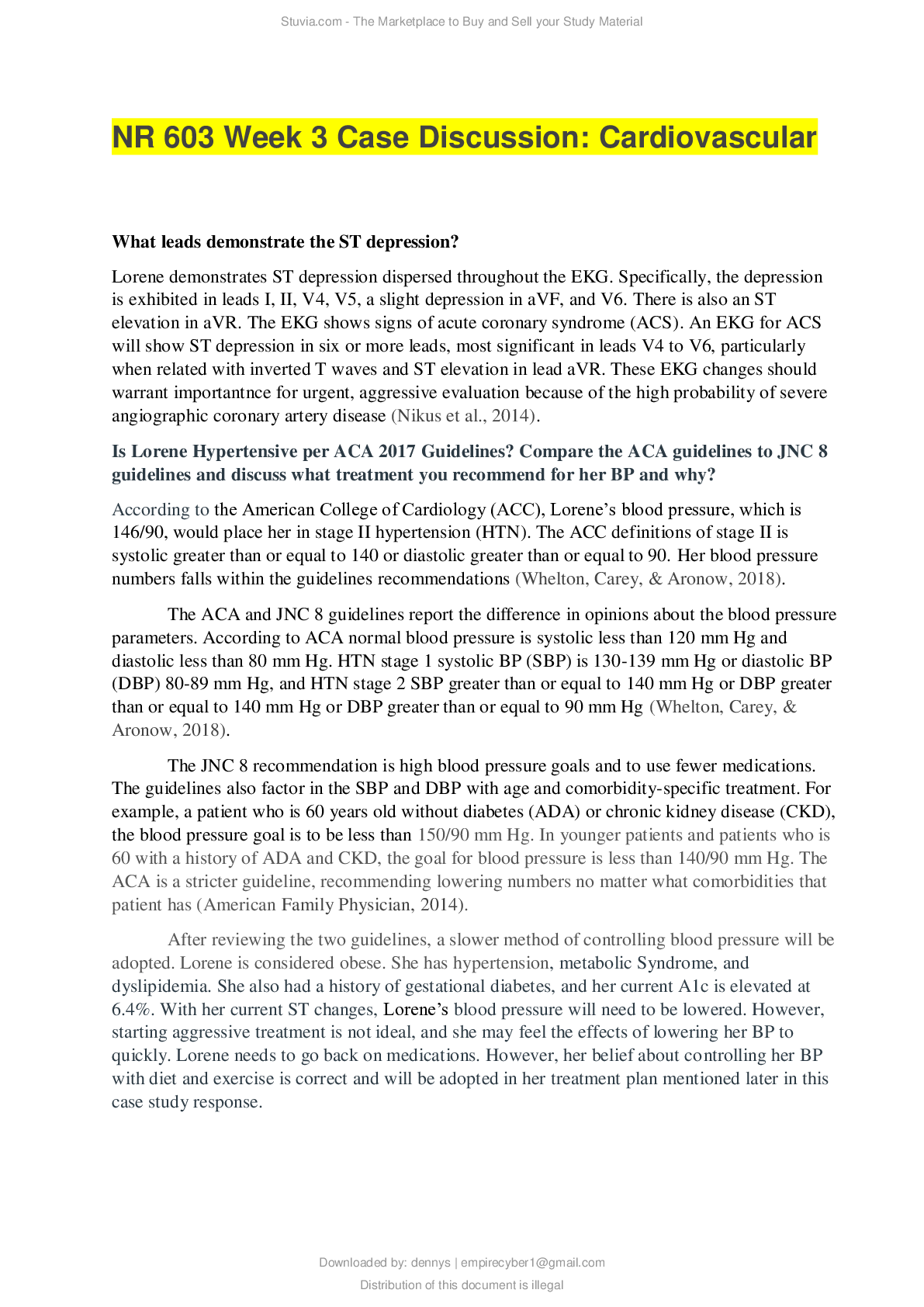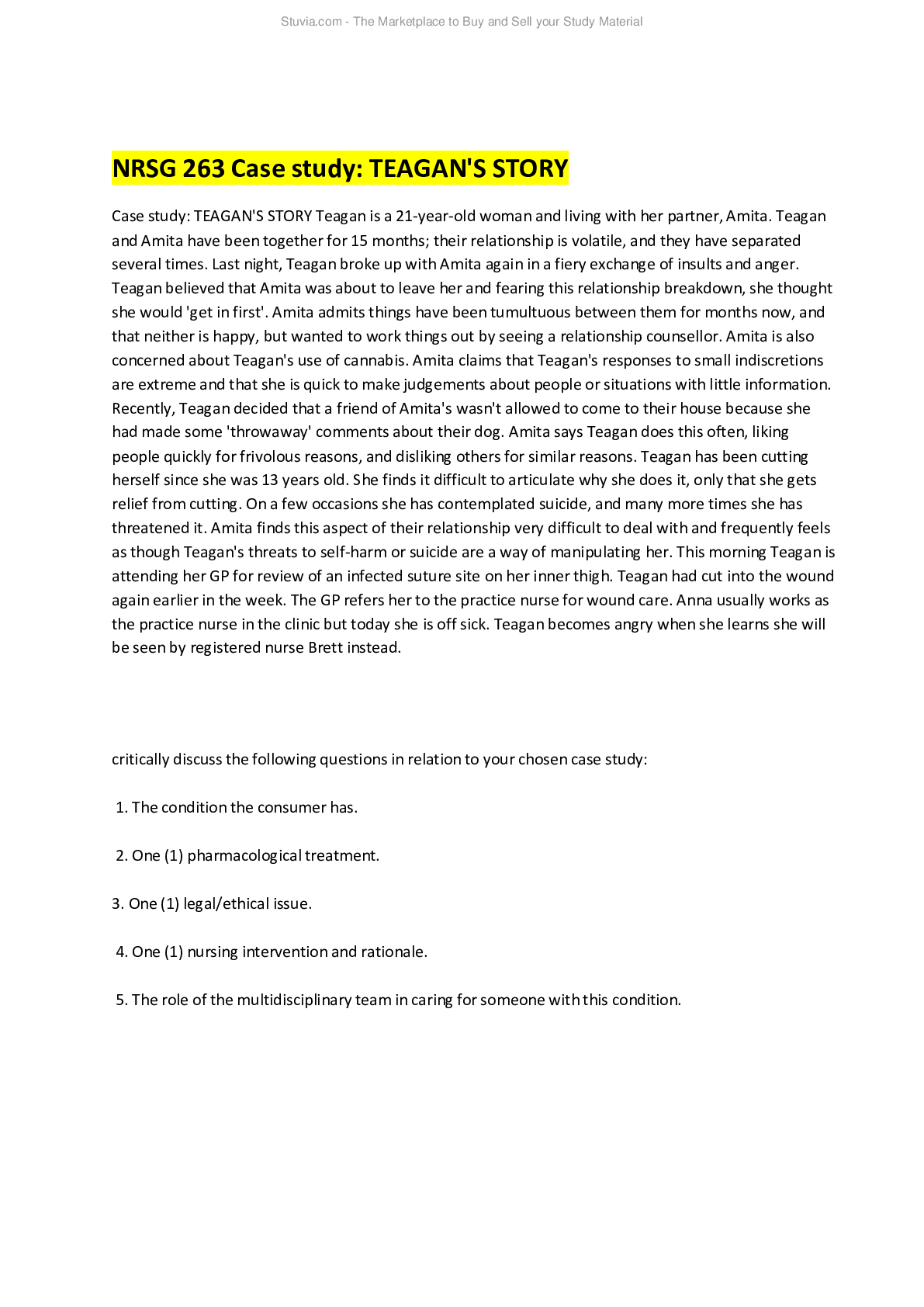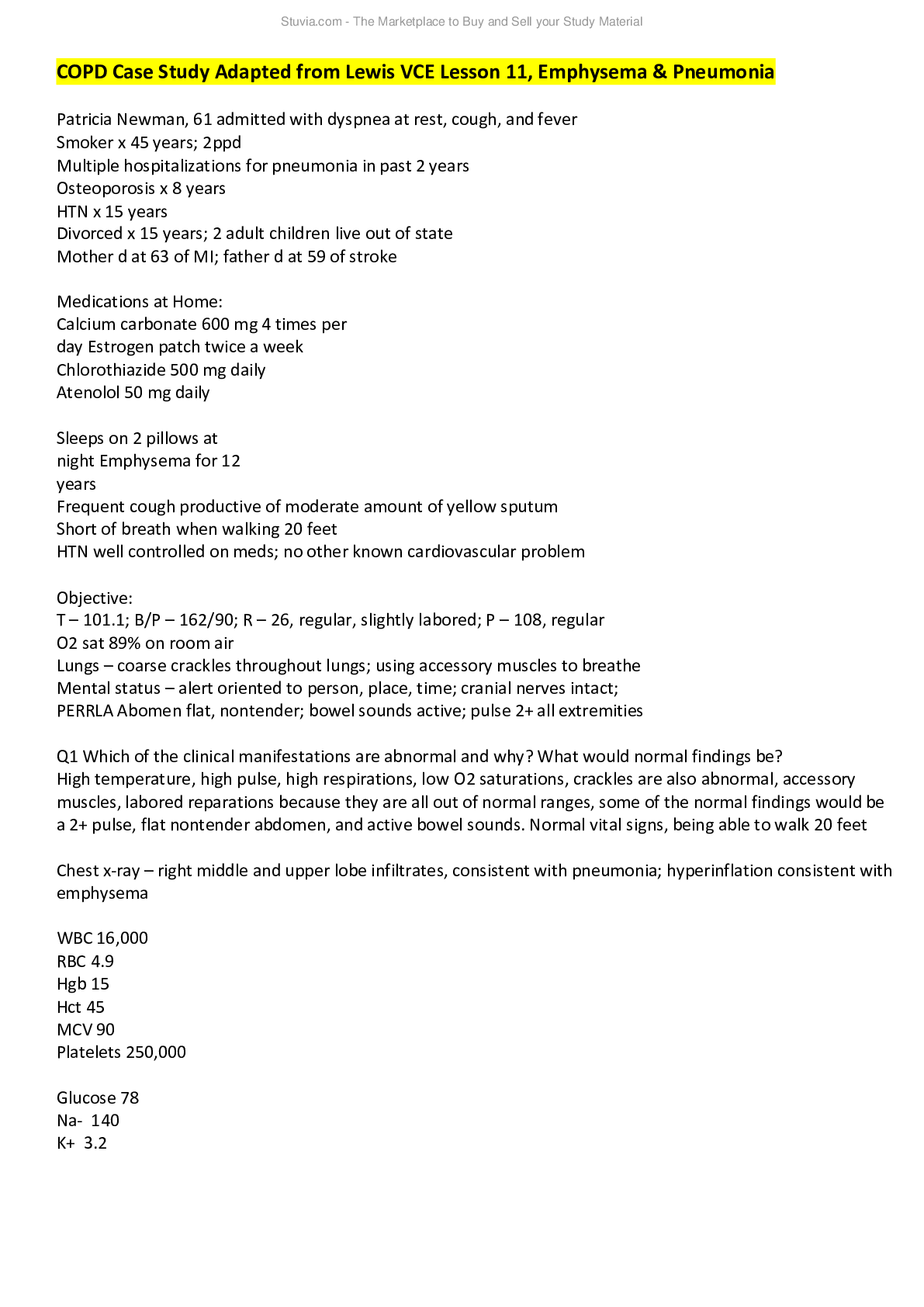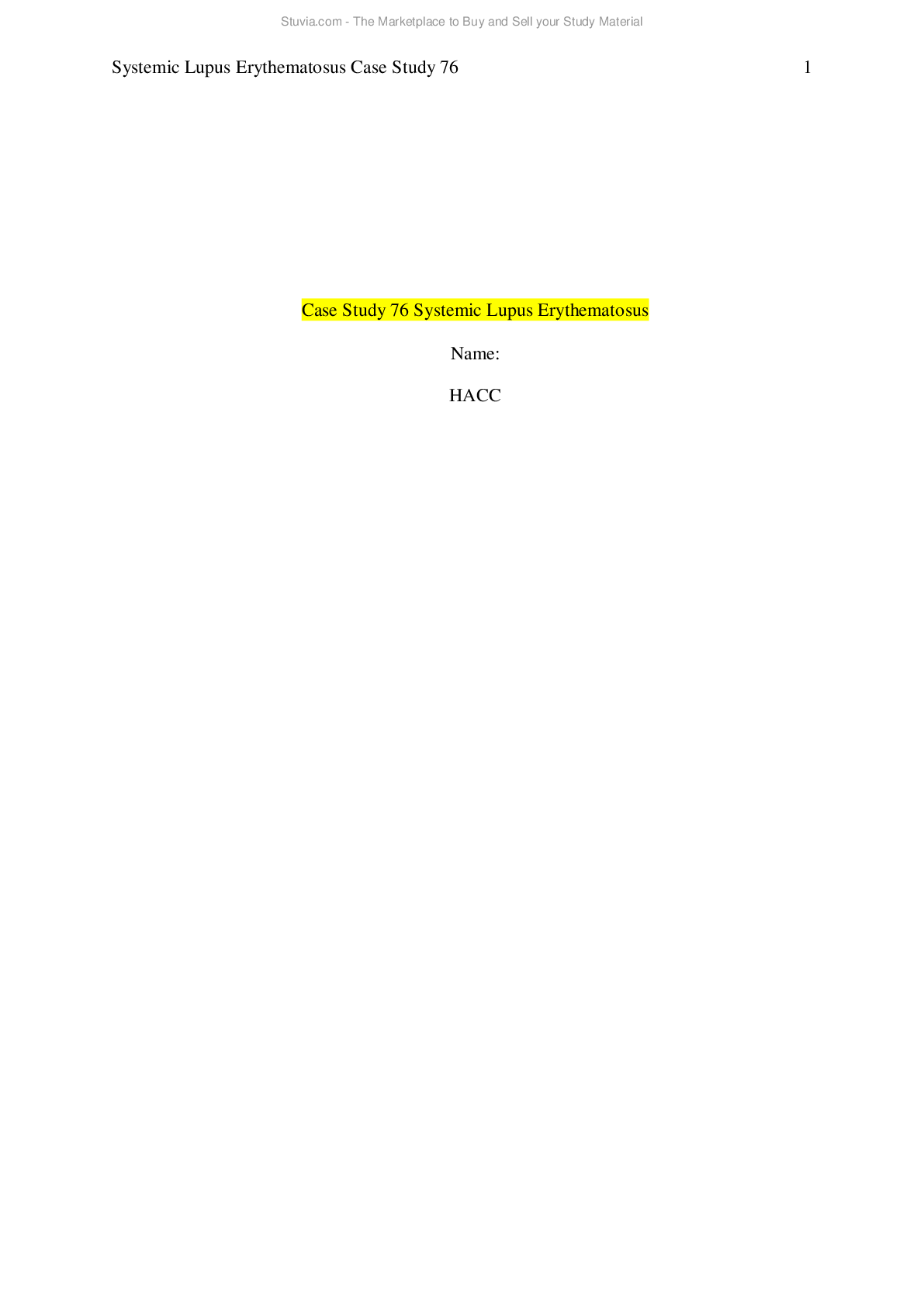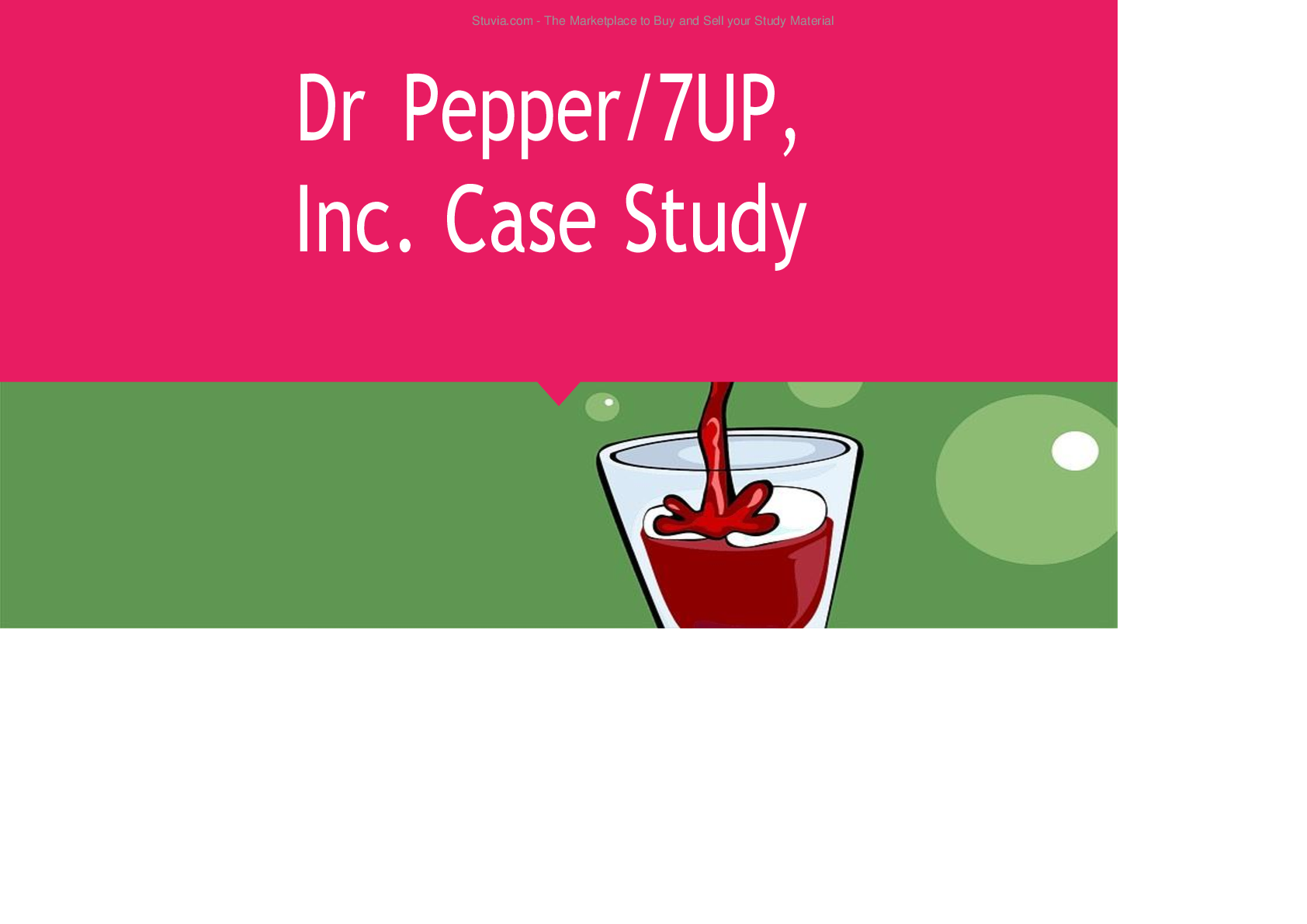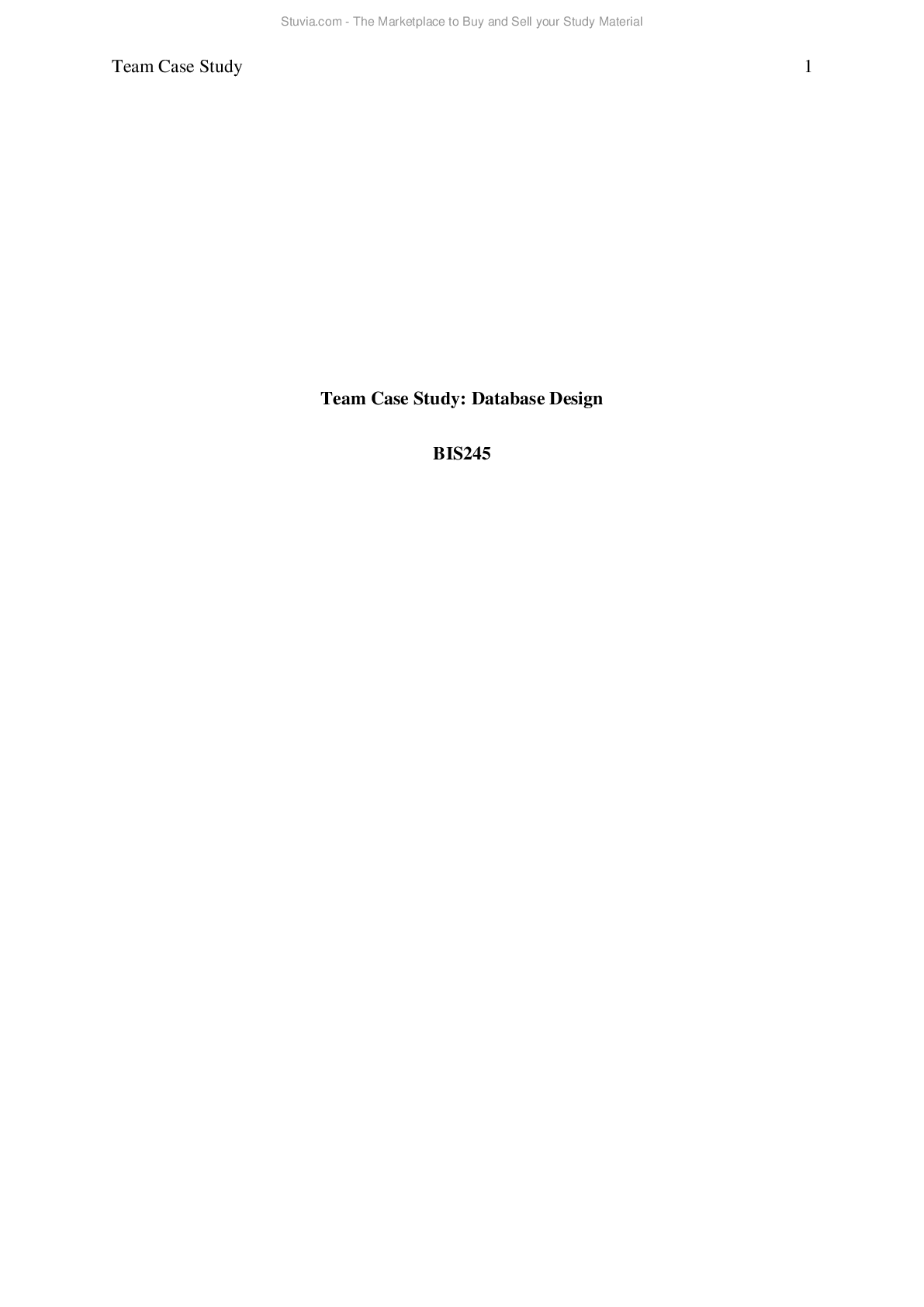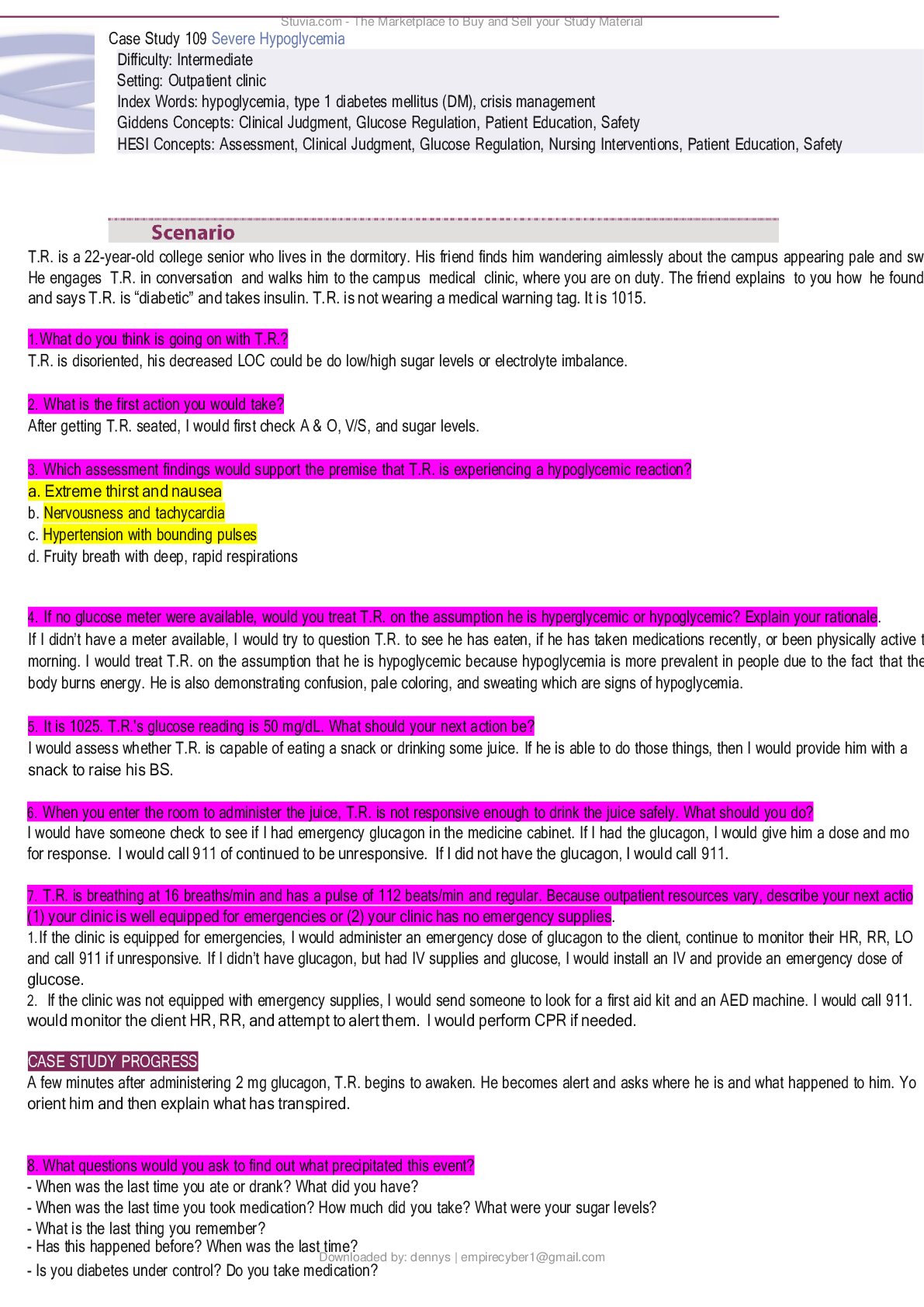*NURSING > CASE STUDY > Baby Boy Jones _ Normal_Newborn_UNFOLDING Reasoning | NURS 281 Normal_Newborn_Case_Study_2020 (All)
Baby Boy Jones _ Normal_Newborn_UNFOLDING Reasoning | NURS 281 Normal_Newborn_Case_Study_2020
Document Content and Description Below
Normal Newborn UNFOLDING Reasoning Baby Boy Jones, 1 hour old Primary Concept Reproduction Interrelated Concepts (In order of emphasis) • Thermoregulation • Nutrition • Perfusion • Pain • Cl... inical Judgment • Patient Education • Communication • Collaboration NCLEX Client Need Categories Percentage of Items from Each Category/Subcategory Covered in Case Study Safe and Effective Care Environment • Management of Care 17-23% ✓ • Safety and Infection Control 9-15% Health Promotion and Maintenance 6-12% ✓ Psychosocial Integrity 6-12% ✓ Physiological Integrity • Basic Care and Comfort 6-12% ✓ • Pharmacological and Parenteral Therapies 12-18% ✓ • Reduction of Risk Potential 9-15% ✓ • Physiological Adaptation 11-17% ✓ This study resource was shared via CourseHCopyright © 2019 Keith Rischer, d/b/a KeithRN.com. All Rights reserved. History of Present Problem One hour after Delivery: Anne is a 17-year-old, gravida 1 para 1 who is 39 weeks gestation. She recently experienced a normal spontaneous vaginal delivery without the use of pain medications or an epidural. She delivered a baby boy who was placed skin to skin following delivery. You assign Apgars of 8 and 9. Baby voided right after delivery. Weight: 7 lbs. 0 oz. (3.2 kg), 20 inches (50.8 cm) long. After he had his first feeding, erythromycin ointment was applied to his eyes. Vitamin K and hepatitis B vaccine (after consent given) were administered in right and left thigh in the outer aspect of the left thigh. Ann is Group Beta Strep (GBS) positive and received antibiotics at 36 weeks and 3 doses before delivery, blood type is B-, and rubella positive. Cord blood was sent. Personal/Social History: Anne has her mother with her for support. She seems to be tired but is holding and interacting with the baby appropriately. The father of the baby is not involved. Anne plans on breastfeeding for “awhile.” Anne still lives at home, and her mother plans to help with the new baby and appears supportive. What data from the histories are RELEVANT and must be interpreted as clinically significant by the nurse? (Reduction of Risk Potential) RELEVANT Data from Report: Clinical Significance: RELEVANT Data from Social History: Clinical Significance: Patient Care Begins: You complete your assessment: What VS data are RELEVANT and must be interpreted as clinically significant by the nurse? (Reduction of Risk Potential/Health Promotion and Maintenance) RELEVANT VS Data: Clinical Significance: Current VS: P-Q-R-S-T Pain Assessment: T: 97.0 F/36.1 C (axillary) Provoking/Palliative: P: 130 (regular) Quality: R: 50 (irregular) Region/Radiation: BP: none taken Severity: NIPS score 0 O2 sat: pink in color/no central cyanosis noted Timing: *Anne is a mom at age 17 *Gravida 1 para 1 *She had the baby at 39 weeks. full-term baby, *baby's weight 3.2 Kg, baby'sheight 50.8 cm.*Erythromycin was given. * Mom tested positivefor rubella.*Apgar score 8 and 9. * Vaccine Hep B and Vitamin k was given to the baby. * Baby voided. *skin to skin. *teen pregnancy requires a lot of social support and patient education *requires pt education. *we expect a healthy baby. * average for the gestational period.*Protect the baby's eyes from mom's body/vaginal fluid.* If she had her MMR vaccine, she does not an additional vaccine since she has rubella antibodies. * Normal.*Vaccine Hep B protects againsthep b. VitaminK helps in blood clotting.* Meconium is expected to be passed during the first 24 hrs after birth. * Helps in temperature regulation, blood glucose levels. protects against postpartum hemorrhage through the release of oxytocin. *Teen mom,Gravida 1 para 1 *Her mother supports her. *The father of the baby is not involved. *Her Mom seems to be tired but is holding and interacting with the baby *Social support, Client's education. *Good Support system *Single mother, needs more support. *Even though she is tired, she is taking care of the is a good support system for her. *T: 97.0 F/36.1 C (axillary) *P 130 regular *R 50 irregular *O2 sat: pink in color/no central cyanosis noted NIPS score 0 *normal temperatureis between97.7 f up to 100.4 f, 97.0 is slightly below normal.Monitor baby's T. * P is WNL. *R is WNL. O2 sat is WNL, This study resource was shared via CourseHCopyright © 2019 Keith Rischer, d/b/a KeithRN.com. All Rights reserved. What assessment data are RELEVANT and must be interpreted as clinically significant by the nurse? (Reduction of Risk Potential/Health Promotion and Maintenance) RELEVANT Assessment Data: Clinical Significance: Clinical Reasoning Begins… 1. Interpreting relevant clinical data, what is the primary concern? What primary health-related concepts does this primary problem represent? (Management of Care/Physiologic Adaptation) Problem: Pathophysiology of Problem in OWN Words: Primary Concept: Collaborative Care (Newborn Orders): Medical Management (Pharmacologic and Parenteral Therapies) Care Provider Orders: Rationale: Expected Outcome: Vital signs q 30 mins until stable for 2 hours, then every 4-6 hrs May place skin to skin if vital signs stable May bathe after 6-8 hours, then bathe prn Recommend and encourage exclusive breastfeeding. Breastfeed PRN, minimum of 8-10 times in 24 hours. No more than four-hour gap in feedings. Feed infant based on feeding cues. Similac/Enfamil 6-10 mL every 3-4 hours based on infant’s feeding cues Frequent skin to skin contact with mother or partner Current Assessment: GENERAL APPEARANCE: Calm, quiet, and in a crib next to the bed. RESP: Lusty cry, breath sounds clear, irregular, non-labored respiratory effort, no nasal flaring, no grunting noted. CARDIAC: Pink, warm & dry, heart sounds regular with no abnormal beats, pulses strong, acrocyanosis present in hands and feet, no central cyanosis noted. NEURO: Fontanelles flat and soft, good tone, slight flexion of arms and legs *General appearance is calm and quiet. *Resp *Neuro, Slight flexion WNL *WNL it is normal for newborns to have irregular R. Continue to monitor. *Maybe it is a result of the baby being nue to monitor for any changes. low temperature of the baby's body (Hypothermia) 97.0 F The newborn is presentinga problem of thermoregulation, He is hypothermic. It is very important to have a body temperature between 97.7 F- 100.4 F, which reflects an acceptable level between heat loss and heat production. The baby is slightly hypothermic, this could be related to low blood glucose( hypoglycemia) or an infection. Skin to skin is very important and effective in newborns thermoregulation. thermoregulation in newborns frequentassessmentof V.S to monitor any changes. *Helps in thermoregulation of newborns, blood glucose levels. protects against postpartum hemorrhage through the release of oxytocin. Also it promotes bonding. * Early bath may cause cold stress. *Breastfeeding helps in releasing oxytocin which helps in preventing postpartum oglobulin Iga for the newborn. Make sure the newborn gets enough nutrients. Expect the newborn VS to be WNL. Bring up the T to be WNL. *Give bath after 8 hrs to avoid cold stress and protect the newborn's vernix. * baby is well red by how many wet diapers , void stool (bowel movement) No wt loss of more than 10% first few days *All screenings, tests and panels are done before discharge to make sure that the newborn is healthy and does not need any intervention. Expected that the baby has normal level of bilirubin, pass hearing test and pass the congenital heart screening. This study resource was shared via CourseHCopyright © 2019 Keith Rischer, d/b/a KeithRN.com. All Rights reserved. Weight at birth and then every evening Input and Output every shift Newborn work up (blood type, Coombs) if the mother is Rh negative The newborn screen at greater than 24 hours Transcutaneous bilirubin level prior to discharge Newborn hearing screen before discharge Congenital heart screening Collaborative Care: Nursing 2. What body system(s) will you assess most thoroughly based on the primary/priority concern? (Reduction of Risk Potential/Physiologic Adaptation) PRIORITY Body System: PRIORITY Nursing Assessments: 3. What nursing priority (ies) will guide your plan of care? (Management of Care) Nursing PRIORITY: PRIORITY Nursing Interventions: Rationale: Expected Outcome: Monitor weight, usually, 5 to 10% wt loss 1st few days, regained within 10-14 days. rhoGAM should be given if the mom is RH- and the newborn is RH+. Metabolic metabolic screening is done after 24 hrs to make sure that the newborn is well fed, this checks the liver function, high level of bilirubin is concerning and cause jaundice. Test the baby's hearing before discharge. Check O2 sat on the foot and the finger Integumentary system priority is to check VS especially T, and prevent further heat loss. Check the skin color, and O2 sat in the extremities. prevent further heat loss,minimize cold stress,maintain skin temperature WNL, continuously monitor T, prevent rapid warming, and use a cap to prevent heat loss from the head. [Show More]
Last updated: 1 year ago
Preview 1 out of 9 pages
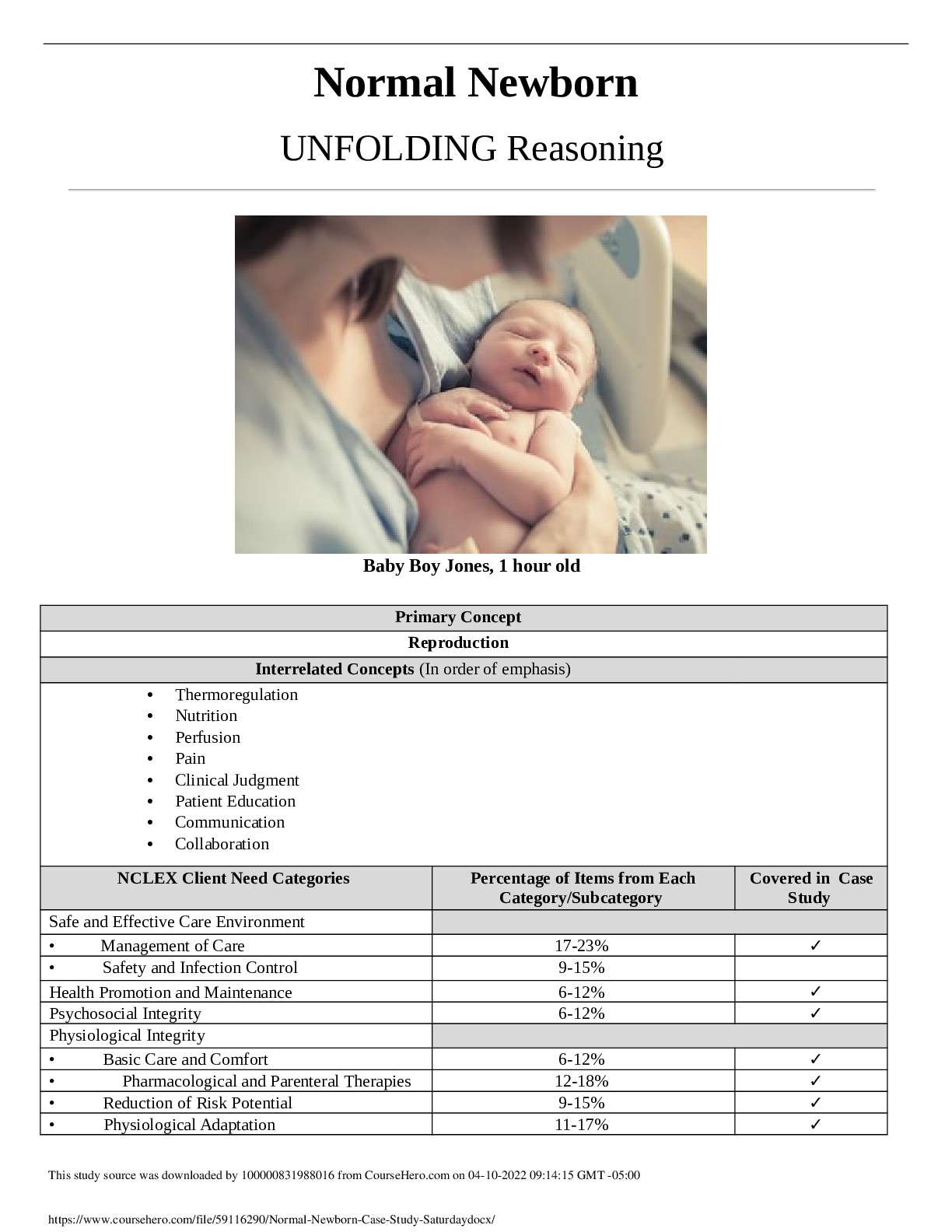
Buy this document to get the full access instantly
Instant Download Access after purchase
Add to cartInstant download
We Accept:

Reviews( 0 )
$9.00
Document information
Connected school, study & course
About the document
Uploaded On
May 02, 2021
Number of pages
9
Written in
Additional information
This document has been written for:
Uploaded
May 02, 2021
Downloads
0
Views
40

